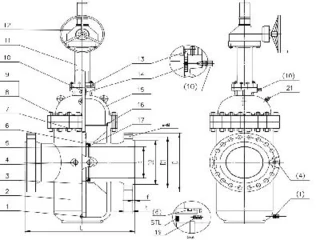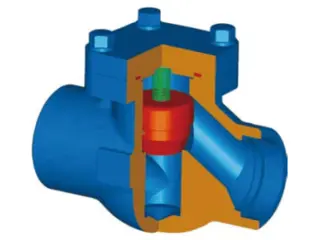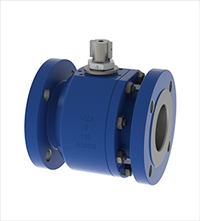The application of 3D printing in the shipbuilding industry (Part six)
3D Printers used in the U.S. Navy
Logistics is not only a challenge for civilian ships, but also for military ships. Therefore, there will be various spare parts kept on the warship to solve this problem. The U.S. Navy's exploration of 3D printing technology is early. At present, some ships of the U.S. Navy have been equipped with 3D printers. Currently, they are mainly used to print small parts such as oil caps and drain plugs. And the application of 3D printing is intended to expand. The advantage of this is that it significantly reduces the number of spare parts on board.
In April 2014, the U.S. Navy installed a 3D printer on the Essex amphibious assault ship. At first, the crew only printed some of the required parts. Currently, the 3D printer is printing a drone project to test the effects of custom drones performing special tasks. The person who is in charge of the drone project is a researcher from the Naval Postgraduate School. The research content is whether or not modern communication technology and assembly technology can be combined to provide a corresponding drone for the crew to perform various tasks.
The basic idea of the project is that the research institutes on land design the corresponding drone according to the needs, and then transmit it to the ship's 3D printer for printing the drone's body. After the printing is completed, the crew assembles the drone according to the instructions. The crew assembles the plastic parts and the electronic components prepared in advance on the ship, and then the manufacture of a drone is completed. The prepared components include an engine, a wireless communication device, a controller and a GPS device. In this way, the ship only needs to carry a small number of UAV general electronic components, and can design different UAV bodies according to different tasks to match with different components. For example, the Essex ship printed a drone for anti-terrorism operations in December last year. The drone was designed to carry a telegraph transmitter and a micro camera, so that real-time video could be transmitted to the crew’s display wore by the crew member. A drone like that also can be applied to the merchant ship which needs to sail on the dangerous sea area.
In addition to the Navy, the U.S. Coast Guard is also evaluating the practical application of 3D printing on board. In the summer of 2015, the Coast Guard's Cutter Healy icebreaker installed a MakerBot 3D printer the fifth generation and set off for a three week scientific expedition to the North Pole. During the expedition, the 3D printer the fifth generation has been working all the time, solving many seemingly small but very troublesome problems, which distinguishes itself. For example, after the ship is sailed, the dishwasher that daily cleaned more than 70 sets of dishes was broken. Therefore, the crew had to use paper plates and cups. And they are offered with limitation, which made the crew's dining unhappy. Fortunately, the 3D printer on board quickly printed the part to repair the dishwasher. Since then, the crew have used 3D printing to solve their technical problems. This 3D printer becomes a qualified handyman. For example, this 3D printer helped install a Go Pro camera on a large scale air plane or printed fit insoles for the crew who was suffering from the shoes or even some entertainment items. Related engineers hope to use multiple different types of printers at the same time, so that they can meet more different needs.
To be continued...
Logistics is not only a challenge for civilian ships, but also for military ships. Therefore, there will be various spare parts kept on the warship to solve this problem. The U.S. Navy's exploration of 3D printing technology is early. At present, some ships of the U.S. Navy have been equipped with 3D printers. Currently, they are mainly used to print small parts such as oil caps and drain plugs. And the application of 3D printing is intended to expand. The advantage of this is that it significantly reduces the number of spare parts on board.
In April 2014, the U.S. Navy installed a 3D printer on the Essex amphibious assault ship. At first, the crew only printed some of the required parts. Currently, the 3D printer is printing a drone project to test the effects of custom drones performing special tasks. The person who is in charge of the drone project is a researcher from the Naval Postgraduate School. The research content is whether or not modern communication technology and assembly technology can be combined to provide a corresponding drone for the crew to perform various tasks.
The basic idea of the project is that the research institutes on land design the corresponding drone according to the needs, and then transmit it to the ship's 3D printer for printing the drone's body. After the printing is completed, the crew assembles the drone according to the instructions. The crew assembles the plastic parts and the electronic components prepared in advance on the ship, and then the manufacture of a drone is completed. The prepared components include an engine, a wireless communication device, a controller and a GPS device. In this way, the ship only needs to carry a small number of UAV general electronic components, and can design different UAV bodies according to different tasks to match with different components. For example, the Essex ship printed a drone for anti-terrorism operations in December last year. The drone was designed to carry a telegraph transmitter and a micro camera, so that real-time video could be transmitted to the crew’s display wore by the crew member. A drone like that also can be applied to the merchant ship which needs to sail on the dangerous sea area.
In addition to the Navy, the U.S. Coast Guard is also evaluating the practical application of 3D printing on board. In the summer of 2015, the Coast Guard's Cutter Healy icebreaker installed a MakerBot 3D printer the fifth generation and set off for a three week scientific expedition to the North Pole. During the expedition, the 3D printer the fifth generation has been working all the time, solving many seemingly small but very troublesome problems, which distinguishes itself. For example, after the ship is sailed, the dishwasher that daily cleaned more than 70 sets of dishes was broken. Therefore, the crew had to use paper plates and cups. And they are offered with limitation, which made the crew's dining unhappy. Fortunately, the 3D printer on board quickly printed the part to repair the dishwasher. Since then, the crew have used 3D printing to solve their technical problems. This 3D printer becomes a qualified handyman. For example, this 3D printer helped install a Go Pro camera on a large scale air plane or printed fit insoles for the crew who was suffering from the shoes or even some entertainment items. Related engineers hope to use multiple different types of printers at the same time, so that they can meet more different needs.
To be continued...
Send your message to this supplier
Related Articles from the Supplier
Related Articles from China Manufacturers
Exploring the Versatility of Slab Gate Valves
- Dec 12, 2023
What Is the Cracking Pressure of Check Valves?
- May 19, 2023
The Sealing Principles of the Valve (Part Two)
- Jan 23, 2021
Related Products Mentioned in the Article
EKS(Xiamen)Precision Industry Co., Ltd
- Address: 中国福建省厦门市集美区灌口镇深青工业园后山头29号
- Phone: 86-0592-6360601
- Business Type: Industry & Trading, Manufacturer,
Supplier Website
Source: http://www.junyingmetal.com/the-application-of-3d-printing-in-the-shipbuilding-industry-part-six.html










